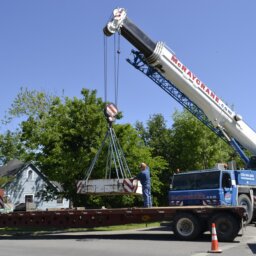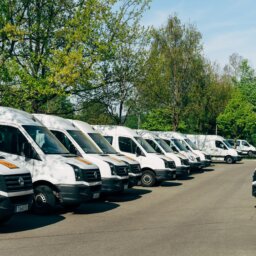
How Does Inland Marine Insurance Work?
If your business ships equipment or products between locations over land, you might need to purchase an inland marine insurance policy—even if you already have a business owner policy (BOP) or commercial package policy (CPP) in place.
Also, inland marine policies cover four other types of business property:
- Property stored at an off-site warehouse or other facilities
- Property stored in a moving vehicle, such as food trucks
- Infrastructure-related property, such as radio towers
- High-value property stored at your location
Examples of property covered under an inland marine policy include personal computers, communications and networking equipment, construction and contracting equipment, medical and scientific equipment, trade show exhibits, sales examples, tools, and photography equipment.
As far as perils, inland marine policies typically cover theft, fire, wind, hail, water damage, and vandalism.
Like most other insurance types, inland marine policies feature coverage limits, as well as deductibles, both of which you can choose depending on your needs (more soon).
What’s the Difference Between Marine and Inland Marine Insurance?
As discussed above, inland marine insurance is designed to cover products, materials and equipment while they’re transported over land, whether via truck or train. These policy types also cover products temporarily warehoused at a third-party location.
Comparatively, standard marine insurance covers products while they’re transported to another location over water.
| Inland Marine Insurance | Marine Insurance |
| Covers products, materials and equipment while they’re transported over land, whether truck or train, or products temporarily warehoused at a third-party location. | Covers products while they’re transported to another location over water. |
Can You Purchase Inland Marine Insurance Endorsements?
Like other insurance types, there are many endorsements you can add to extend the coverage provided by your inland marine policy. These include:
- Accidental Drop and Damage – Covers mishandled products, whether in transit or during the loading or unloading process.
- Bailee’s Customer Coverage – Covers third-party property in your business’s care, custody, or control.
- Builder’s Risk – Covers construction or renovation structures and materials.
- Contractor’s Equipment – Covers contractors’ equipment (you can choose between all-risk or specified perils.
- Exhibition and Fine Arts Coverage – Covers valuables while in transit, on exhibit, or loan to a third-party.
- Installation Floater – Covers products between the time they’re shipped until used or installed.
- Mysterious Disappearance – Covers goods that went missing for undiscoverable reasons.
- Motor Truck Cargo – Protects customers’ goods while transported and delivered by your company.
What Are Some Common Inland Marine Insurance Exclusions?
Inland marine policies can differ between insurers, including what they do and don’t cover.
With this said, they typically exclude:
- Property that doesn’t move and is stored at your primary location
- Business vehicles (this is where a commercial auto policy comes into play)
- Goods that travel via plane or boat
- Damage that occurs before shipment
- Normal wear and tear
- Earthquake
- Flood
- Nuclear damage
How Much Does Inland Marine Insurance Cost?
Depending on your insurer, you may be able to purchase inland marine coverage as an add-on to your existing business insurance policy or as a standalone policy. Either way, annual premiums can range from about $25 per month ($300 a year) for small businesses up to $10,000 or more for large companies that ship expensive goods.
Overall factors that can impact your inland marine insurance premium include the value of the property you want to insure, policy limits, classes of the property insured, your business’s industry, and state and federal requirements.
Should You Purchase Inland Marine Insurance?
Based on everything we’ve discussed, you’ll obviously want to purchase inland marine insurance if your business ships or transports products or equipment.
However, there are several other instances where inland marine coverage can represent a good decision, such as if you ship high-dollar trade show equipment around the country, store equipment at a third-party location, or temporarily store another business’s property at your location. Additional instances include:
- Occasionally ship high-value property over land
- Property stored in an always-moving vehicle (e.g., a repair vehicle)
- Have assets that frequently change business locations
- Property stored at owned locations other than your primary business address
Bottom line: If your business owns movable property, it may benefit from inland marine coverage. However, depending on the circumstances, you might already have coverage under your commercial insurance, so you must closely review your policy.
How Can You Learn More About Inland Marine Insurance?
The professionals at IHS Insurance Group have decades of combined experience with all aspects of commercial insurance, including inland marine coverage. We’ll take a look at your needs, find reputable carriers with the coverage you want, and help you balance coverage with overall cost.
Do you need a FREE Quote or have questions regarding commercial insurance? Please fill out our quick GET A FREE QUOTE form, and an agent will get back to you at your convenience!
We look forward to speaking with you today!















